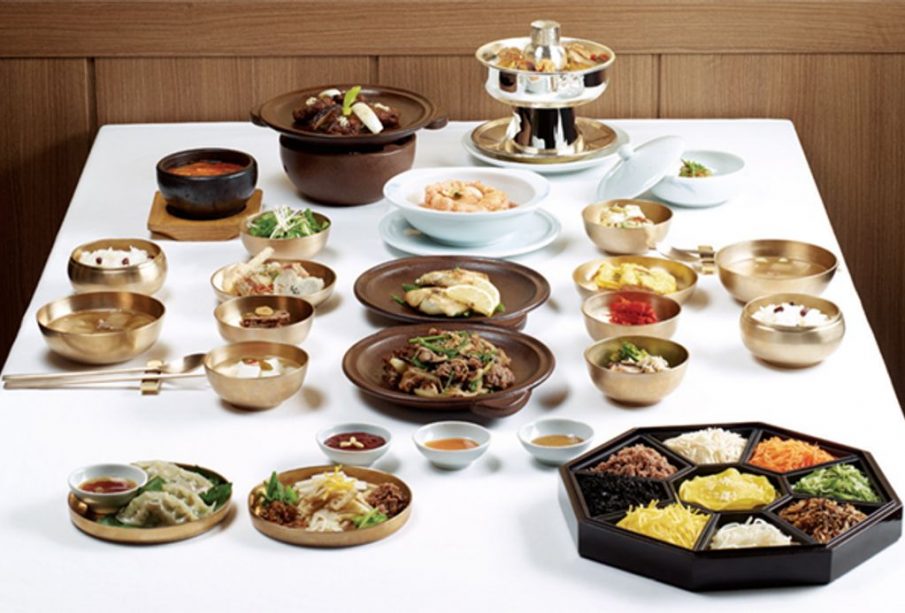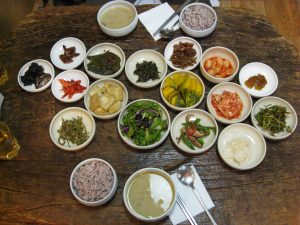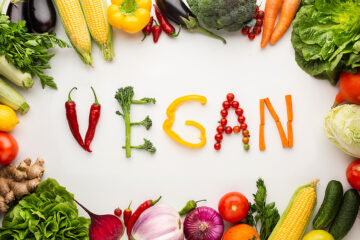
When thinking of Korean food, vegetarian dishes are the last thing to come to mind. Meat and fish are usually present in Korean cuisine since it makes part of the culture. Some of our favorite Korean foods have meats and animal products like gimbap, bibimbap, soft tofu stew, and jajangmyeon. But, this can be changed. Although it is hard to find vegetarian food in Korean, it is not impossible to make vegetarian dishes.
Table of Contents
Why Vegetarian Dishes Are Hard To Find in Korea
Korean’s Love For Meat
If not all, then most Korean love meat. For the older generation, beef symbolizes wealth. So in a sense, eating meat in most meals means that you are wealthy.
According to the Organization for Economic Cooperation and Development (OECD), Koreans eat more meat in a year than a Chinese and Japanese person.
In Korea, the average person eats 51.3 kg (113 lbs) of meat a year. Whereas in China, it is 47.1 kg (91 lbs) and 35.5 kg in Japan (78 lbs).
Again, Korean treasure meat because it is luxury.
Meat Shows Financial Stability
During the 1960s and 1970s, eating meat daily was not realistic. At the time, common people only ate meat on special occasions since it was very expensive. In contrast to today, where many people can eat meat no matter their financial situation, the Korean royals only ate meat once or twice a week. As buying meat was financially hard, many people would alternate for beef fat to make in stews. Beef fat would give the soups the meaty flavor and satisfaction. As opposed to now, past-Koreans would eat 1.2 kg (3.6 lbs) of meat each year.
The reason why meat was scarce and expensive, is due to the number of cattle available. A cattle’s purpose was for harvesting, creating vegetation, and not for eating. However, things began to change when the Japanese colonize Korea.
Japan has influence Korea in many aspects and learning how to multiply cattle was one of them. Japan was able to increase the number of cattle in Korea for military use but after the war was over, they took a great number of cattle back to Japan. This only made it harder for Koreans to get a hold of meat.
As time went by, Koreans were able to adapt and increase the number of cattle. As a result, many of the older generations who went through this experience treasure beef, and see beef as a symbol of financial stability.
Finding Vegetarian Dishes in Korea
Being a vegetarian in Korea is hard, but being a vegan can be impossible. If you are vegetarian or vegan, think twice before traveling to Korea or consider changing your diet while traveling. Without a doubt, most of the dishes you see will have beef, chicken, pork, fish, or some sort of animal product. Even in the veggie side dishes can have animal products just by the way it was made. A strict vegetarian or vegan will have a hard time eating out. When traveling, make sure to learn how to order food. Unless you do not mind removing the meat yourself, learning phrases to try to remove any meats from the meal can help.
Some helpful phrases:
Where can I eat vegetarian food?
채식 음식 어디에서 먹을 수 있어요?
Chaeshik eumshik uhdiaesuh mukeul soo issuhyo?
Do you have anything without meat?
고기 안 든것 있어요?
Gogi ahn deungeot issuhyo?
Are there animal products in this?
동물성 식품 들어있어요?
Dongmoolsung shikpoom deuluhissuhyo?
Please do not put meat and egg in it.
고기하고 계란 넣지 마세요.
Gogihago gyeran nuhji maseyo.
It is important to emphasize what to take out of the meal for a lot of older generations are not aware of the vegetarian lifestyle and the restrictions.
Buddist Temple Food
Do not lose all hope, for vegetarian dishes is possible in Korea. Reliable vegetarian dishes can be found in Buddist temples. Since monks (also known as seunims) mainly follow a meat-free diet, people can find vegetarian dishes in places labeled as temple food.
Even some Korean Buddist monks use the vegetarian term loosely since there are seunims who eat meat on certain occasions. These circumstances fall under being sick or in social events where there are not alternatives.
Vegetarian Dishes in Seoul
Although Korea continues to remain a meat-loving community, vegetarian alternatives are increasing especially in Seoul.
Restaurants with vegetarian dishes:
Loving Hut is a food chain that started in Asia and has many vegan and vegetarian dishes. You are able to eat Asian cuisine and not feel worried about the animal products
Hongdae has a Mexican restaurant have is both for vegetarians and meat lovers. B’mucho Cantina is a great place to eat with friends since one no will feel restricted.
Yummy Yomil is the home of vegan burgers with over 10 different options. Not only do they have vegan burgers, but they also have vegan desserts.
Making Korean Vegetarian Dishes
The best part of cooking Korea food is the part where you can alter the ingredients to your liking. It is not hard to make Korean vegetarian dishes. In most situations, all you have to do it remove the meat, or not cook the food in animal broth.
Here are some vegetarian dishes you can make:
Buchujeon (Garlic Chives Pancakes) so delicious and very simple to make. These pancakes only need four ingredients: all-purpose flour, garlic chives, onion, and soy sauce.
Kongnamul Japchae can be easily made with soybean sprout, onion, mushrooms, carrots, cucumber, spinach, and sesame seeds. Not only is it healthy, but easy to make.
With Gimbap, it is an easy fix. It is vegan and vegetarian friendly. You can which out the beef, crab, and egg with tofu. To get more experimental, you can marinate the tofu for a savory taste.
Dubu Jorim (Braised Tofu) is a savory, spicy vegetarian side dish that pairs well with any meal. This dish is made with tofu, pepper flakes, soy sauce, sugar, sesame oil, sesame seeds, garlic, onion, and green onions. This dish takes less than 15 minutes to cook.
If you have leftover japchae, you can easily make crispy seaweed noodle rolls. By placing japchae in seaweed and the roll dunking into a flour and potato starch batter and frying it, you can make a delicious snack. A tip is to double dry for extra crispiness.
For more blogs like this:
To learn more on Korean food, you could also watch the video below!
























